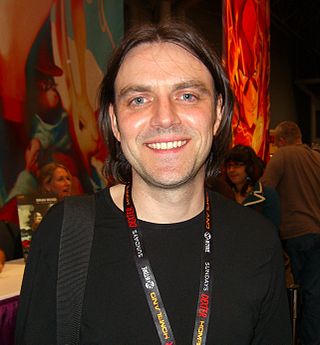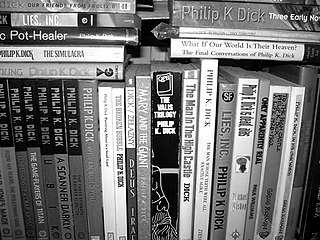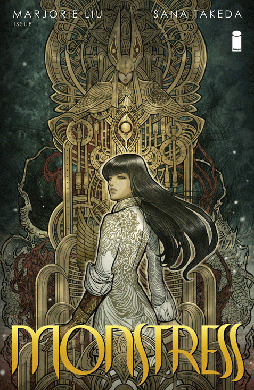
Philip Kindred Dick, often referred to by his initials PKD, was an American science fiction writer. He wrote 44 novels and about 121 short stories, most of which appeared in science fiction magazines during his lifetime. His fiction explored varied philosophical and social questions such as the nature of reality, perception, human nature, and identity, and commonly featured characters struggling against elements such as alternate realities, illusory environments, monopolistic corporations, drug abuse, authoritarian governments, and altered states of consciousness. He is considered one of the most important figures in 20th century science fiction.

Do Androids Dream of Electric Sheep? is a dystopian science fiction novel by American writer Philip K. Dick, first published in 1968. The novel is set in a post-apocalyptic San Francisco, where Earth's life has been greatly damaged by a nuclear global war, leaving most animal species endangered or extinct. The main plot follows Rick Deckard, a bounty hunter who has to "retire" six escaped Nexus-6 model androids, while a secondary plot follows John Isidore, a man of sub-par IQ who aids the fugitive androids.

Colleen Doran is an American writer-artist and cartoonist. She illustrated hundreds of comics, graphic novels, books and magazines, including the autobiographical graphic novel of Marvel Comics editor and writer Stan Lee entitled Amazing Fantastic Incredible Stan Lee, which became a New York Times bestseller. She adapted and did the art for the short story "Troll Bridge" by Neil Gaiman, which also became a New York Times bestseller. Her books have received Eisner, Harvey, Bram Stoker, Locus, and International Horror Guild Awards.

Scott McCloud is an American cartoonist and comics theorist. He is best known for his non-fiction books about comics: Understanding Comics (1993), Reinventing Comics (2000), and Making Comics (2006), all of which also use the medium of comics.

Vincent Patrick Deighan, better known by the pen name Frank Quitely, is a Scottish comic book artist. He is best known for his frequent collaborations with Grant Morrison on titles such as New X-Men, We3, All-Star Superman, and Batman and Robin, as well as his work with Mark Millar on The Authority and Jupiter's Legacy.

Jeff Smith is an American cartoonist. He is best known as the creator of the self-published comic book series Bone.

Terry Moore is an American cartoonist, known for the series Strangers in Paradise, Rachel Rising, and the founding of Homage Comics. His work has won him recognition in the comics industry, including the Eisner Award for Best Serialized Story in 1996 for Strangers in Paradise #1-8, which was collected in the trade paperback I Dream of You.

John Cassaday is an American comic book artist, writer, and television director. He is best known for his work on the critically acclaimed Planetary with writer Warren Ellis, Astonishing X-Men with Joss Whedon, Captain America with John Ney Rieber, and Star Wars with Jason Aaron.

David W. Mack is an American comic book artist and writer, known for his creator-owned series Kabuki and for co-creating with Joe Quesada the Marvel Comics superhero Echo.

Ryan North is a Canadian writer and computer programmer.

Marvel Comics Super Special: Blade Runner or just Blade Runner is a comic book adaptation of the film Blade Runner, published by Marvel Comics in 1982. It was written by Archie Goodwin with art by Al Williamson, Carlos Garzon with Dan Green and Ralph Reese.

The bibliography of Philip K. Dick includes 44 novels, 121 short stories, and 14 short story collections published by American science fiction author Philip K. Dick during his lifetime.

Boom! Studios is an American comic book and graphic novel publisher, headquartered in Los Angeles, California, United States.

Steve Murray, known by the pen-name Chip Zdarsky, is a Canadian comic book artist and writer, journalist, illustrator and designer. He has also used the pseudonym Todd Diamond. He worked for National Post for over a decade, until 2014, as an illustrator and humorist and wrote and illustrated a column called "Extremely Bad Advice" for the paper as well as The Ampersand, the newspaper's pop culture section's online edition.
Rob Guillory is an American comic book artist known for his art on Chew, published by Image Comics. He currently writes and draws Farmhand published by Image Comics and writes Mosley published by Boom! Studios.

James T. Tynion IV is an American comic book writer. He is best known for his work on the Batman franchise at DC Comics, his DC Black Label series The Nice House on the Lake and his independent series The Department of Truth and Something Is Killing the Children.

Monstress is an ongoing epic fantasy comics series written by Marjorie Liu and drawn by Sana Takeda, published since November 2015 by the American publisher Image Comics.

S.H.I.E.L.D. is a comic book series published by Marvel Comics, premiering with a first issue cover dated 2014. It was written by Mark Waid. The series was loosely based on the TV series Agents of S.H.I.E.L.D. and was used by Marvel Comics to introduce many characters from the show into the world of the comics. After its cancellation it was followed by the series Agents of S.H.I.E.L.D. The series also had a spin-off named Howling Commandos of S.H.I.E.L.D. which picked up after issue 9.

Dust to Dust or Do Androids Dream of Electric Sheep?: Dust to Dust is an 8 issue comic book limited series published by BOOM! Studios in 2010. The series is a prequel to the story of Do Androids Dream of Electric Sheep? The series was written by Chris Roberson and drawn by Robert Adler.
Blade Runner is an American neo-noir science fiction media franchise originating from the 1968 novel Do Androids Dream of Electric Sheep? by Philip K. Dick, about the character of Rick Deckard. The book has been adapted into several media, including films, comics, a stage play, and a radio serial. The first film adaptation was Blade Runner, directed by Ridley Scott in 1982. Although the film initially underperformed at the American box office, it became a cult classic, and has had a significant influence on science fiction. A novelization and a comic adaptation of the film were released in the same year. From 1995 to 2000, three novels serving as sequels to both Blade Runner and the original novel were written by K. W. Jeter, a friend of Dick's. A film sequel to Blade Runner, Blade Runner 2049, was released in 2017. To celebrate the 30th anniversary of Blade Runner in 2012, a short film was released, and in the lead up to the release of Blade Runner 2049, several more short films detailing events that occurred between 2019 and 2049 were released. The influence of the franchise has helped spawn the cyberpunk genre.

















